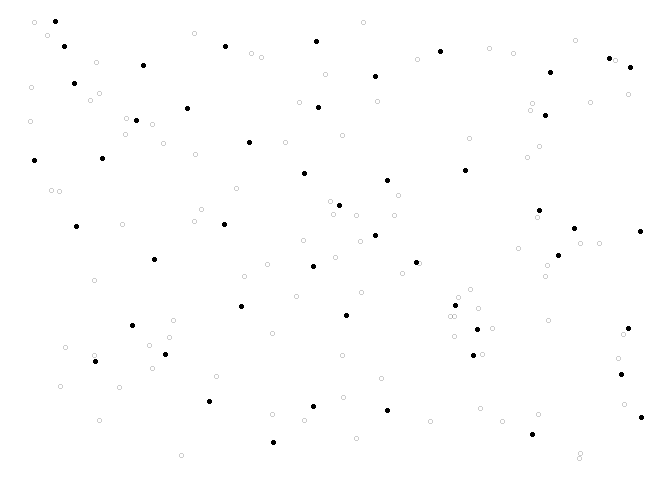
The hardware and bandwidth for this mirror is donated by dogado GmbH, the Webhosting and Full Service-Cloud Provider. Check out our Wordpress Tutorial.
If you wish to report a bug, or if you are interested in having us mirror your free-software or open-source project, please feel free to contact us at mirror[@]dogado.de.
Spatial data are generally auto-correlated, meaning that if two units
selected are close to each other, then it is likely that they share the
same properties. For this reason, when sampling in the population it is
often needed that the sample is well spread over space. A new method to
draw a sample from a population with spatial coordinates is proposed.
This method is called wave (weakly associated vectors)
sampling. It uses the less correlated vector to a spatial weights matrix
to update the inclusion probabilities vector into a sample. For more
details see Raphaël Jauslin and Yves Tillé (2020) https://doi.org/10.1007/s13253-020-00407-1.
install.packages("WaveSampling")You can install the latest version of the package
WaveSampling with the following command:
# install.packages("devtools")
devtools::install_github("Rjauslin/WaveSampling")This basic example shows you how to solve a common problem. Spatial
coordinates from the function runif() are firstly
generated.
library(WaveSampling)
#> Le chargement a nécessité le package : Matrix
N <- 144
n <- 48
X <- cbind(runif(N),runif(N))
head(X,10)
#> [,1] [,2]
#> [1,] 0.35000373 0.2557976
#> [2,] 0.87553309 0.6370745
#> [3,] 0.09019367 0.9000345
#> [4,] 0.97906235 0.3576902
#> [5,] 0.32768335 0.1444912
#> [6,] 0.41488141 0.5468550
#> [7,] 0.67789730 0.4799551
#> [8,] 0.21604234 0.8712608
#> [9,] 0.38741250 0.6283276
#> [10,] 0.78754375 0.6948966Inclusion probabilities pik is set up all equal with the
function rep().
pik <- rep(n/N,times = N)It only remains to use the function wave(),
s <- wave(X,pik)We can also generate a plot to observe the result.
library(ggplot2)
ggplot() +
geom_point(data = data.frame(x = X[,1],y = X[,2]),
aes(x = x,y = y),
shape = 1,
alpha = 0.2)+
geom_point(data = data.frame(x = X[s == 1,1],y = X[s == 1,2]),
aes(x,y),
shape = 16,
colour = "black")+
theme_void()
These binaries (installable software) and packages are in development.
They may not be fully stable and should be used with caution. We make no claims about them.
Health stats visible at Monitor.